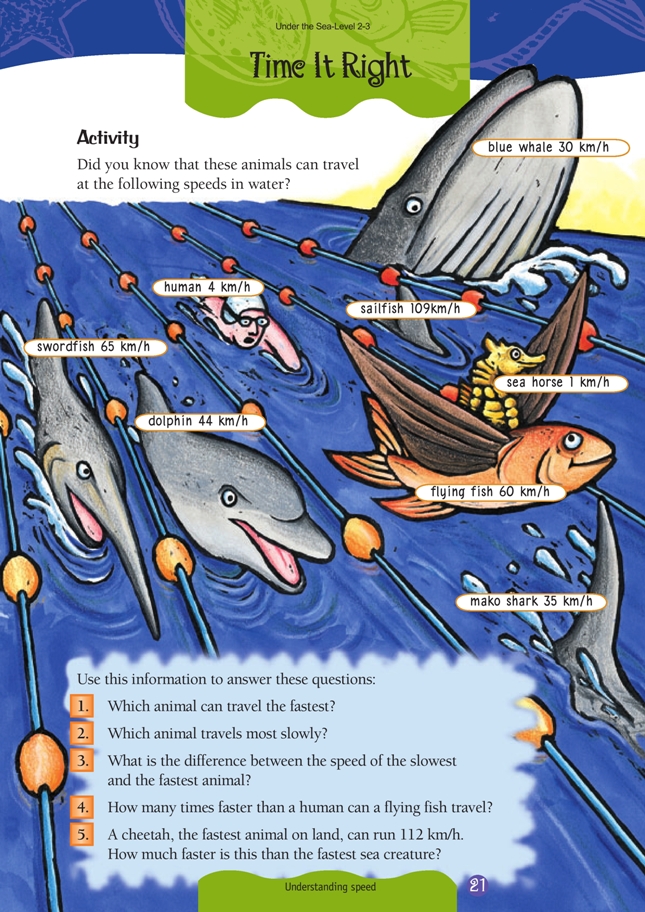This is a level 2 number activity from the Figure It Out theme series.
A PDF of the student activity is included.
Click on the image to enlarge it. Click again to close. Download PDF (443 KB)
solve subtraction problems
Speed, expressed in kilometres per hour, is an advanced concept. Students will have some reference for this from their knowledge of the speed limit for vehicles, 50 km/h on city streets and 100 km/h on open roads. You will need to explain to them that a speed of 65 kilometres per hour means that the creature would swim 65 kilometres if it kept swimming for an hour at that speed.
These speeds can be related to a journey with which the students are familiar. For example, it would take a mako shark just over two hours to swim the distance from Christchurch to Ashburton.
Students can perform the operations required in these problems by using the distance part of each speed. For example, for question 4, a human swims at 4 km/h and a flying fish at 60 km/h. Since 15 x 4 = 60, the fish is travelling 15 times as fast as the human. Note: Not every human swims this fast, and you may have to explain to students that this is an example of average speed.
If it is the swimming season, students might like to know how fast they can swim or run. Time them over 50 metres in seconds (for example, they may take 90 seconds to swim 50 metres). Divide 180 by their time in seconds (for example, 180 ÷ 90 = 2) to work out their speed in kilometres per hour.
Answers to Activity
1. Sailfish
2. Sea horse
3. 108 km/h
4. 15 times
5. 3 km/h
